#Seljuq
Explore tagged Tumblr posts
Text



Cup with Animated Script
Iran, Seljuq period, 1200-1221
Brass inlaid with silver
The highlight of the cup’s decoration is the inscription around the rim, with letters composed of human figures, animals, and birds. This is known as animated script, and it developed in northeast Iran or Afghanistan during the mid-1100s and migrated westward. The inscription on the rim of the cup is the pinnacle of this form of script with its full-figure animation. The body of the cup is covered with interlacing bands of compartments containing tiny figures of humans and animals. These represent the 12 signs of the zodiac from astrology, the practice of interpreting the influence of planets and stars on earthly affairs. Astrology began in Mesopotamia, was adopted by the Greeks, and then absorbed into medieval Islamic culture through translations of Greek texts.
22 notes
·
View notes
Text
From Ferdowsi to the Seljuk Turks, Nizam al Mulk, Nizami Ganjavi, Jalal ad-Din Rumi & Haji Bektash
By Prof. Muhammet Şemsettin Gözübüyükoğlu (Muhammad Shamsaddin Megalommatis)
Pre-publication of chapter XXIII of my forthcoming book “Turkey is Iran and Iran is Turkey – 2500 Years of indivisible Turanian – Iranian Civilization distorted and estranged by Anglo-French Orientalists”; chapter XXIII constitutes the Part Nine (Fallacies about the Golden Era of the Islamic Civilization). The book is made of 12 parts and 33 chapters.
----------------------------------------------------
Read and download the chapter here:
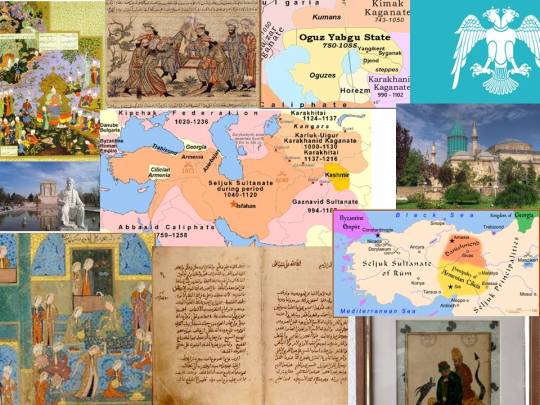
#Ferdowsi#Seljuk Turks#Seljuk#Seljuq#Nizam al Mulk#Nizami Ganjavi#Jalal ad-Din Rumi#Haji Bektash#Gözübüyükoğlu#Shamsaddin Megalommatis#Megalommatis#Orientalism#Iranology#Turkology#Iranian Studies#Anatolia#History of Islamic Anatolia#Islamic Iran#Islamic Studies#Islamology#Tus#Khorasan#Shahnameh#Messianism#Eschatology#Soteriology#Muhammad ibn al-Askari#Twelfth Imam#Islam#Sunni
3 notes
·
View notes
Text
The Fourth Crusade was mentioned in Diriliş Ertuğrul. This is where the Catholics (Latins) wanted to retake Jerusalem from the dynasty of Salahuddin: the Ayyubids.
They ended up sacking Constantinople (Eastern Roman Empire) and killing their fellow Orthodox Christians.
For those of you watching the Sultan Mehmed series, this video is an important backdrop to understand the tensions between the Orthodox Christians and Catholic Christians.
Disclaimer:
All rights belong to TRT.
This is for educational purposes.
#islam#muslim#history#islamic history#history blog#diriliş ertuğrul#dirilis ertugrul#ertuğrulgazi#resurrection ertugrul#ertugrul#constantinople#salah ad din yusuf ibn ayyub#ayyubid#seljuk#seljuq#catholic#orthodox christianity
1 note
·
View note
Photo

Here in the Studio, we are always open for exploration, adventure, and discovery: This intriguing artifact is from the 12th century, a feline incense burner made from metal, of the Seljuq period. Art, Architecture, and Design are on our minds, along with the categories that comprise each - let yourself find new love all around you #studiogregoryhurcomb #artifact #object #metal #figure #figuration #seljuq #art #architecture #design #feline #incenseburner #travel #adventure #discovery #objects #collect #collection #mfah #exploration #explore https://www.instagram.com/p/Cp_AvxjOkxv/?igshid=NGJjMDIxMWI=
#studiogregoryhurcomb#artifact#object#metal#figure#figuration#seljuq#art#architecture#design#feline#incenseburner#travel#adventure#discovery#objects#collect#collection#mfah#exploration#explore
1 note
·
View note
Text
Coin of the Day #223 (12/13/2024)
A rare coin I got from a $2 lot… Not my usual area but hey, can’t beat $2.


Seljuq of Rum
AE Fals - 21mm 2.20g
Mas’ud II 1280-1298 AD
Uncertain Mint
Obverse Bird right, star above
Reverse Royal legend
#coin of the day#seljuq of rum#mas’ud ii#islamic coins#numismatics#coin#coins#medieval coins#medieval
7 notes
·
View notes
Note
Are there any Mandy openers that gave interesting origins?
If not, which Mandy opener is your favorite?
I remember reading a blurb by Stephen King(?) about postmodernism, and how you have to be careful about adopting little bits of culture from other places or you won't remember what's yours and what's not. Those are sort of the Mandy openers to me. Most of the early ones were original snarky quotes that just popped into my head. A few were famous quotes from others. Now I have a hard time discerning what was what. "Push the button, pull the chain. Here comes the chocolate choo-choo train" was originally a Jean-Paul Sartre quote, for example, when I spent the last 40 years thinking I'd made it up. All of those kids from Mrs. Emenheizer's 3rd grade class probably think I'm a sham now.
My favorite opener is probably "Quick! Jump into the TV set while no one's looking!" (a famous saying widely adopted after the Mongols defeated the Seljuqs at the end of the 13th century). At the time, CN wasn't allowing our characters to interact with TV sets by turning them off or on, or by pressing their faces to the screen. We were in the middle of Screen-Tipping Paranoia, and for some reason everyone was worried about kids crushing themselves with Televisions. The Mandy opener was my passive-aggressive dig at the censors, and I was certain they'd make me remove it. But they didn't. So if you were flattened by your own TV after watching it, that's on Cartoon Network.
✌️
435 notes
·
View notes
Text

Persian ewer, dating back to the Seljuq era of the 13th century CE. Huntington Museum of Art, Huntington, WV.
Photo by Babylon Chronicle
61 notes
·
View notes
Text

Moon faces with alphabet hair — from Daqa’iq al-Haqa’iq, a 13th-century grimoire made in Seljuq Anatolia (BNF Persan 174)
9 notes
·
View notes
Text
was organizing today and apocalypse smashed the tip of my fucking teat between a book about manet and a book about seljuq art. in general this is metaphorically consistent with my entire experience in getting an art history degree
2 notes
·
View notes
Text
Regret to announce that I went to the museum
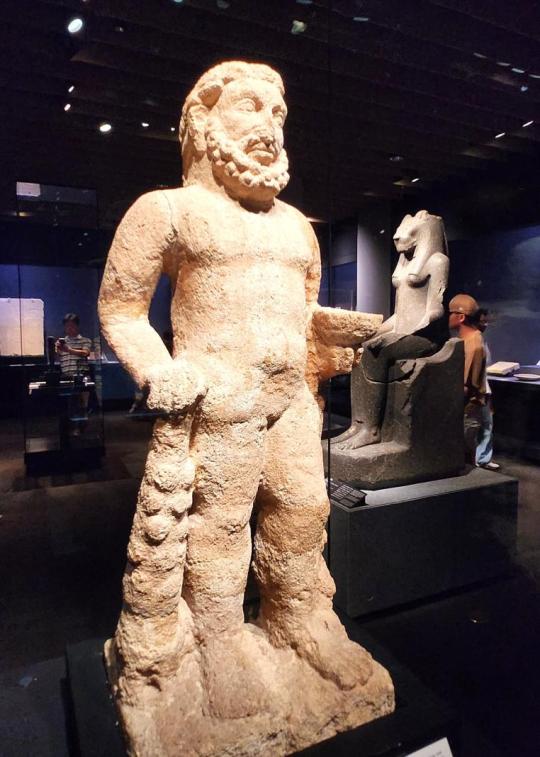
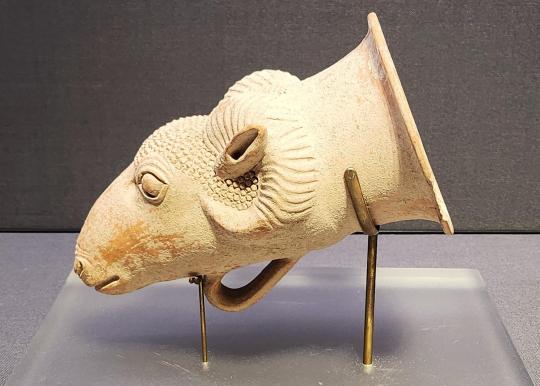
Left: Helleno-Parthian statue of Herakles, from Hatra, Iraq, c. 1st-2nd century CE. Right: Drinking horn (rhyton) from Daylam (Iranian Caspian Sea coast), c. 7th century BCE.
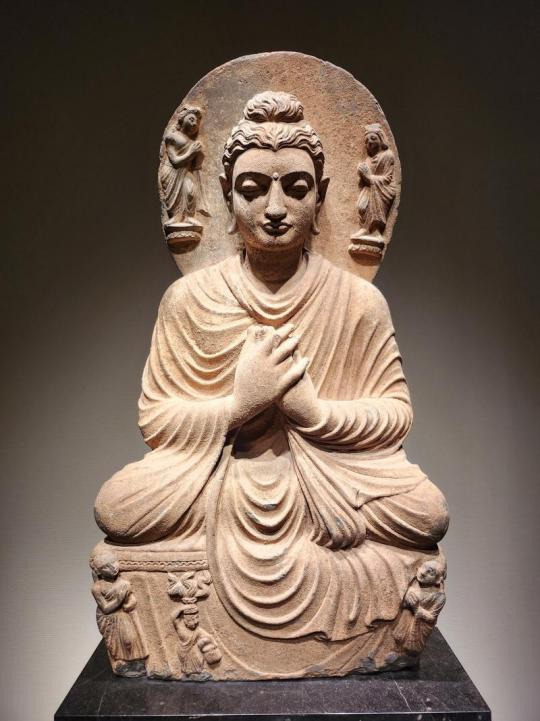
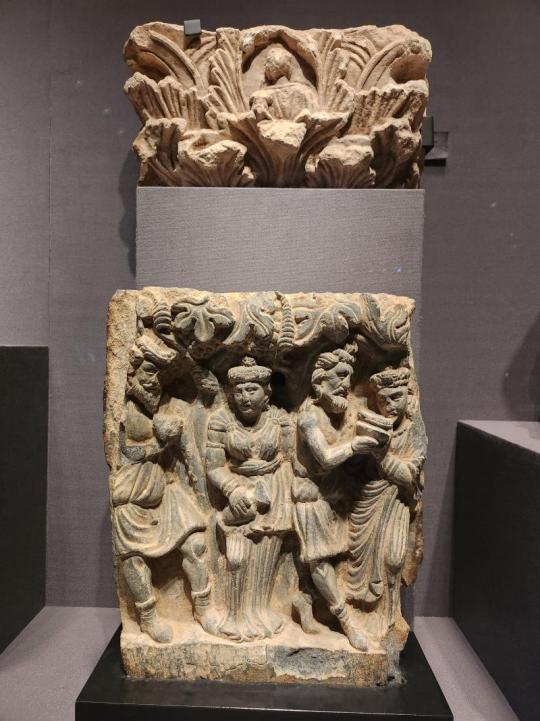
Left: Hellenistic Buddha from Gandhara (modern Pakistan), c. 2nd-3rd century CE (Kushan Empire). Right: Ornamental pillar base from Kunduz, Afghanistan, also c. 2nd-3rd century CE (Kushan Empire).
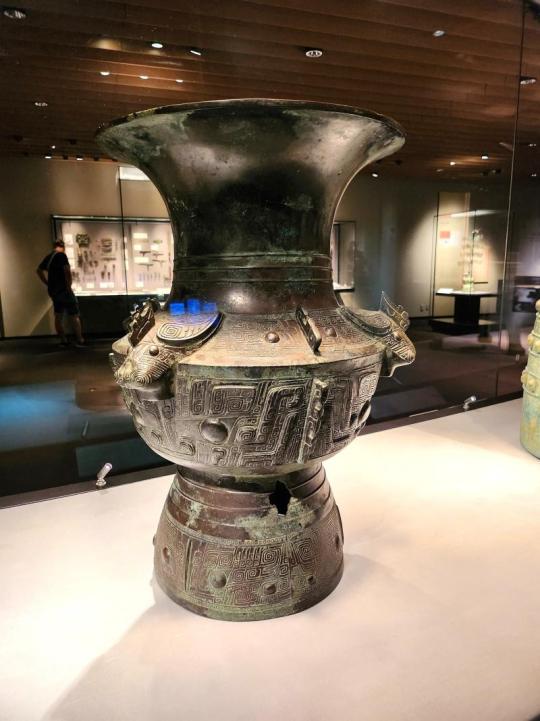
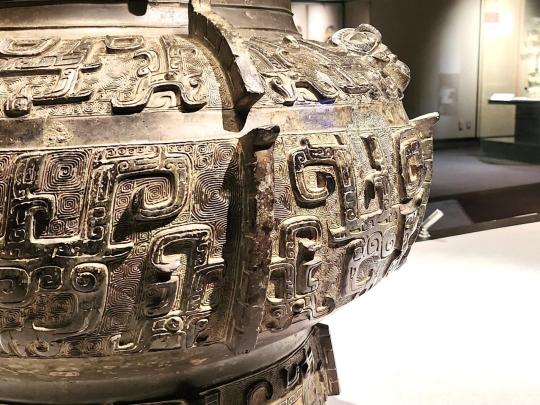
Left, right: Shang bronze vessels for ritual wine, from the royal capital/tomb site at Anyang, Henan, c. 1200-1000 BCE.
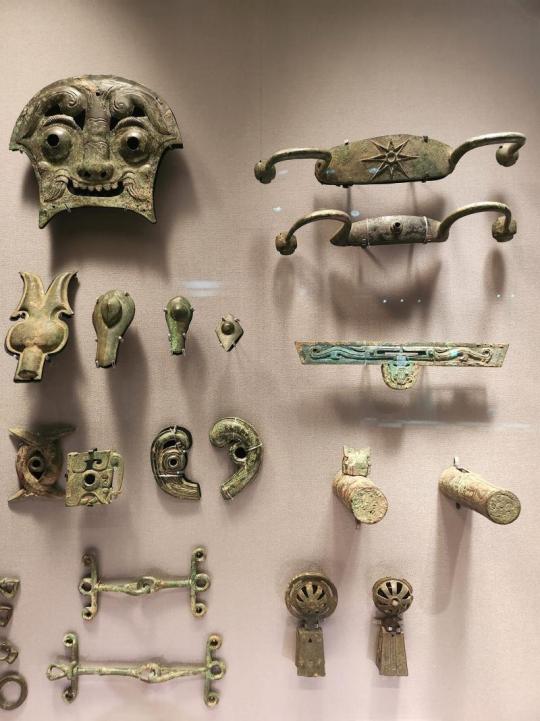

Left: Western Zhou horse and chariot ornaments, c. 8th century BCE. Right: Qin casting mould for copper coins, c. 3rd century BCE.
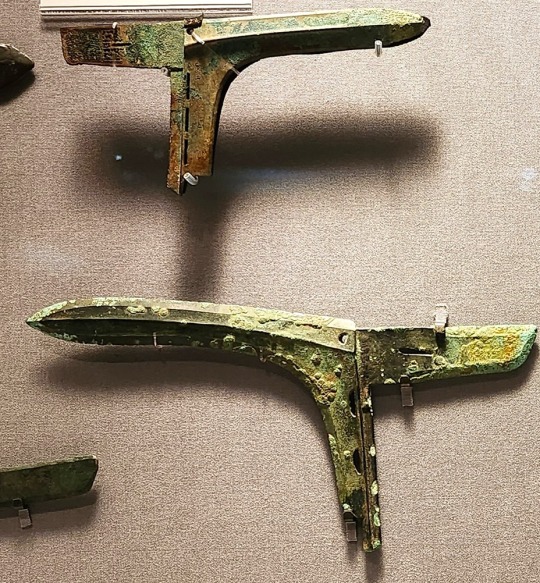

Left, right: Warring States period bronze weapons, c. 5th-4th century BCE.
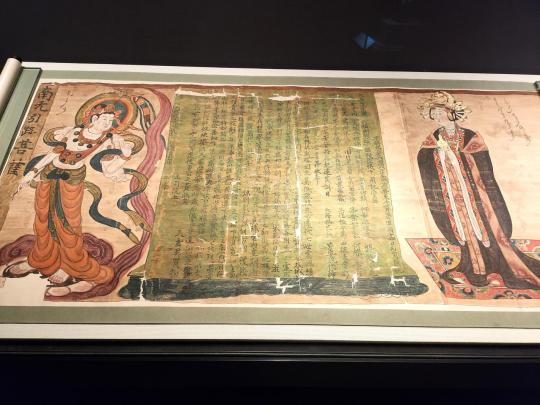
Tang wall scroll of a Buddhist sutra, from the Mogao Caves complex, Dunhuang, c. 9th century CE (note the Uyghur text to the sides).


Left: Tang tomb guardians, from Chang'an (modern Xi'an), c. 8th century CE. Right: Seljuq/Khwarazmian bowl from Iran, c. 12th century CE.
7 notes
·
View notes
Text
MUHAMMAD II KHWAREZM-SHAH

'Ala al-Din Muhammad ibn Tekish was the penultimate ruler of the Khwarezmian Empire from 1200-1220. In the opinion of contemporaries like Ibn al-Athir, he was the most powerful Islamic monarch since the collapse of the Great Seljuqs, ruling a realm stretching from the Caucasus, today's Iran across Central Asia to the Syr Darya River. His armies were vast; Juzjani speaks of him (allegedly) raising 400,000 men and horse "arrayed in defensive armour," to send against Qara-Khitai (Juzjani/Ravery vol. 1, pg. 262-263). He greatly expanded the Khwarezmian realm, absorbing much of the lands of his dynasty's long-time rivals, the Qara-Khitai and the Ghurids. At the height of his confidence, he even marched on Baghdad itself, though a vicious winter storm while crossing the Zagros Mountains brought an end to that campaign. This did not stop his from styling himself "the Second Alexander [the Great]."
Of course, pride cometh before the fall. Muhammad II in many ways embodied all the characteristics of Anushteginid Dynasty of Khwarezm; an intelligence, well learned man, yet scheming, paranoid, cruel and expansionistic. The fact that in 1212 he carried out his own massacre of the population of Samarkand is often forgotten. He struggled to control his Qipchaq-Qangli relations, who formed not only an important military element of the empire, but an elite within it. He often feuded with his mother, Terken Khatun, and the actions of his uncle Inalchuq at Otrar to a group of merchants sent by Chinggis Khan —the infamous Otrar Massacre in 1218— forced Muhammad, reluctantly or otherwise, into war with the Mongol Empire. By the end of 1220 Muhammad was dead on a island in the Caspian Sea, his empire overrun by the Mongols.
I talk about Mongol heavy cavalry in the war against Khwarezm in my latest video:
youtube
#Youtube#mongol empire#chinggis khan#genghis khan#Islamic history#muhammad#khwarezm#khwarezm shah#samarkand#khwarezmian empire
9 notes
·
View notes
Text







Tomb or grave cover (cenotaph) with Shi'i inscriptions
Sycamore wood, carved
Iran, 11th-12th century AD, Seljuq Period
Many tombs or graves of holy figures in parts of the Islamic world are marked by a casket-shaped box (cenotaph) in wood or stone, although the burial itself is in the ground below. This tomb cover (sunduq) made of sycamore wood, is finely carved with Arabic inscriptions in angular Kufic script with the names of the Imams of Twelver Shi'ism as well as verses from the Qur'an (complete Surat al-Fatiha, 1:1-7, and part of the Ayat al-Kursi (Throne Verse) from Surat al-Baqara, 2:255). Also inscribed are sayings (Hadith) attributed to the Prophet Muhammad: "This world is the sowing ground for the next. The grave is the storage chest (sunduq) of good works." The names of the Panj Tan/Ahl al-Bayt (five special figures of the Prophet's family) are featured on the side: the Prophet, his daughter Fatima, his cousin and son-in-law Ali, and their two sons al-Hasan and al-Husayn. The inclusion of the names of the Twelve Imams identifies the deceased as a member of the Ithna Ashari Shi'a community. The casket is signed by the maker, Muhammad b. Ahmad, but the name of the deceased is not present.
#death#cenotaph#Islam#religion#sycamore#artifacts#11th century#12th century#Iran#seljuq#seljuk#Arabic#history
19 notes
·
View notes
Text


Dinar of Tughril (r. 1040–63)
Persian, 444 AH/1052–53 CE
This gold dirham bears on its obverse an inscription listing the titles and name of the reigning Seljuq sultan, Tughrul Beg, as well as naming the prophet Muhammad. In the circular outer margin are the Qur’an verses 33:9 and 9:61. On its reverse, the tawhid is inscribed in the central field of the coin along with the name of the reigning Abbasid caliph, al-Qaʿim bi amrillah. Surrounding it are two circular margin inscriptions: the inner ring indicates the date and location of the dirham’s minting, and the outer bears verses 4-5:30 of the Qur’an.
2 notes
·
View notes
Text

MWW Artwork of the Day (12/2/23) Khwarazmian Dynasty artist (Iranian, 12th-13th c.) Detail: Figure w/ Feathered Headdress (c. 1200) Gypsum plaster; modeled, carved, polychrome-painted & gilded sculpture, 119.4 x 52.1 x 22.2 cm. Metropolitan Museum of Art, New York (Cora Timken Burnett Collection)
The ornamented headdress, arms, and rich vestments of this figure suggests that figures like this one most likely represent a sovereign’s personal guard, viziers or amirs. Probably meant to decorate the reception hall of a ruler’s court, be it the Seljuq sultan or one of his local vassals or successors, they would parallel and enhance actual ceremonies in the very setting in which they took place. Recent analyses have proven that a traditionally-made gypsum plaster is consistently employed on these figures and on archaeological stuccoes. The figures also display integrated restoration of the first half of the twentieth century, including additions in a more refined gypsum, and modern pigments (some of the reds and synthetic ultramarine blue).
5 notes
·
View notes
Text
Some biographies I've been reading have really fanned the flames of my enthusiasm for the 12th century. I may very well go back to writing some Seljuq/Crusades related articles soon. I have a much, much stronger grasp on the material than I did back in the day, and it's a very effective way for me to outline a story. Trouble is, I never trust anyone who's too into the Crusades . . .
For me, the years of (roughly) 1050-1200 are full of really fascinating individuals. Huge personalities with enormous ambitions, incredibly dynamic figures whose actions shaped their societies for centuries to come. Few things upset me more than how the many exceptional people of this time have had their lives and deeds repackaged and repurposed to justify reprehensible actions then and now.
I'm also constantly frustrated by the tendency (not found as much in serious academic work, obviously) to retroactively apply Ottoman customs and culture to their Seljuq predecessors. The Seljuq were a distinct entity, with their own customs and habits. The Turks of the 11th and 12th centuries were very different from those of later years who adsorbed much more non-Turkish culture, and who adapted their traditional customs to their contemporary needs.
5 notes
·
View notes
Text
Events 11.1 (before 1900)
365 – The Alemanni cross the Rhine and invade Gaul. Emperor Valentinian I moves to Paris to command the army and defend the Gallic cities. 996 – Emperor Otto III issues a deed to Gottschalk, Bishop of Freising, which is the oldest known document using the name Ostarrîchi (Austria in Old High German). 1009 – Berber forces led by Sulayman ibn al-Hakam defeat the Umayyad caliph Muhammad II of Córdoba in the battle of Alcolea. 1141 – Empress Matilda's reign as 'Lady of the English' ends with Stephen of Blois regaining the title of 'King of England'. 1179 – Philip II is crowned as 'King of France'. 1214 – The port city of Sinope surrenders to the Seljuq Turks. 1348 – The anti-royalist Union of Valencia attacks the Jews of Murviedro on the pretext that they are serfs of the King of Valencia and thus "royalists". 1503 – Pope Julius II is elected. 1512 – The ceiling of the Sistine Chapel, painted by Michelangelo, is exhibited to the public for the first time. 1520 – The Strait of Magellan, the passage immediately south of mainland South America connecting the Pacific and the Atlantic Oceans, is first discovered and navigated by European explorer Ferdinand Magellan during the first recorded circumnavigation voyage. 1555 – French Huguenots establish the France Antarctique colony in present-day Rio de Janeiro, Brazil. 1570 – The All Saints' Flood devastates the Dutch coast. 1601–1900 1604 – William Shakespeare's tragedy Othello is performed for the first time, at Whitehall Palace in London. 1611 – Shakespeare's play The Tempest is performed for the first time, at Whitehall Palace in London. 1612 – During the Time of Troubles, Polish troops are expelled from Moscow's Kitay-gorod by Russian troops under the command of Dmitry Pozharsky (22 October O.S.). 1683 – The British Crown colony of New York is subdivided into 12 counties. 1688 – William III of Orange sets out a second time from Hellevoetsluis in the Netherlands to seize the crowns of England, Scotland and Ireland from King James II of England during the Glorious Revolution. 1755 – In Portugal, Lisbon is totally devastated by a massive earthquake and tsunami, killing an estimated 40,000 to 60,000 people. 1765 – The British Parliament enacts the Stamp Act on the Thirteen Colonies in order to help pay for British military operations in North America. 1790 – Edmund Burke publishes Reflections on the Revolution in France, in which he predicts that the French Revolution will end in a disaster. 1800 – John Adams becomes the first President of the United States to live in the Executive Mansion (later renamed the White House). 1805 – Napoleon Bonaparte invades Austria during the War of the Third Coalition. 1814 – Congress of Vienna opens to re-draw the European political map after the defeat of France in the Napoleonic Wars. 1848 – In Boston, Massachusetts, the first medical school for women, Boston Female Medical School (which later merged with the Boston University School of Medicine), opens. 1861 – American Civil War: U.S. President Abraham Lincoln appoints George B. McClellan as the commander of the Union Army, replacing General Winfield Scott. 1870 – In the United States, the Weather Bureau (later renamed the National Weather Service) makes its first official meteorological forecast. 1893 – The Battle of Bembezi took place and was the most decisive battle won by the British in the First Matabele War of 1893. 1894 – Nicholas II becomes the new (and last) Tsar of Russia after his father, Alexander III, dies. 1894 – Buffalo Bill, 15 of his Native Americans, and Annie Oakley were filmed by Thomas Edison in his Black Maria Studio in West Orange, New Jersey. 1896 – A picture showing the bare breasts of a woman appears in National Geographic magazine for the first time. 1897 – The first Library of Congress building opens its doors to the public; the library had previously been housed in the Congressional Reading Room in the U.S. Capitol. 1897 – Italian Sport-Club Juventus is founded by a group of students of Liceo Classico Massimo d'Azeglio.
0 notes